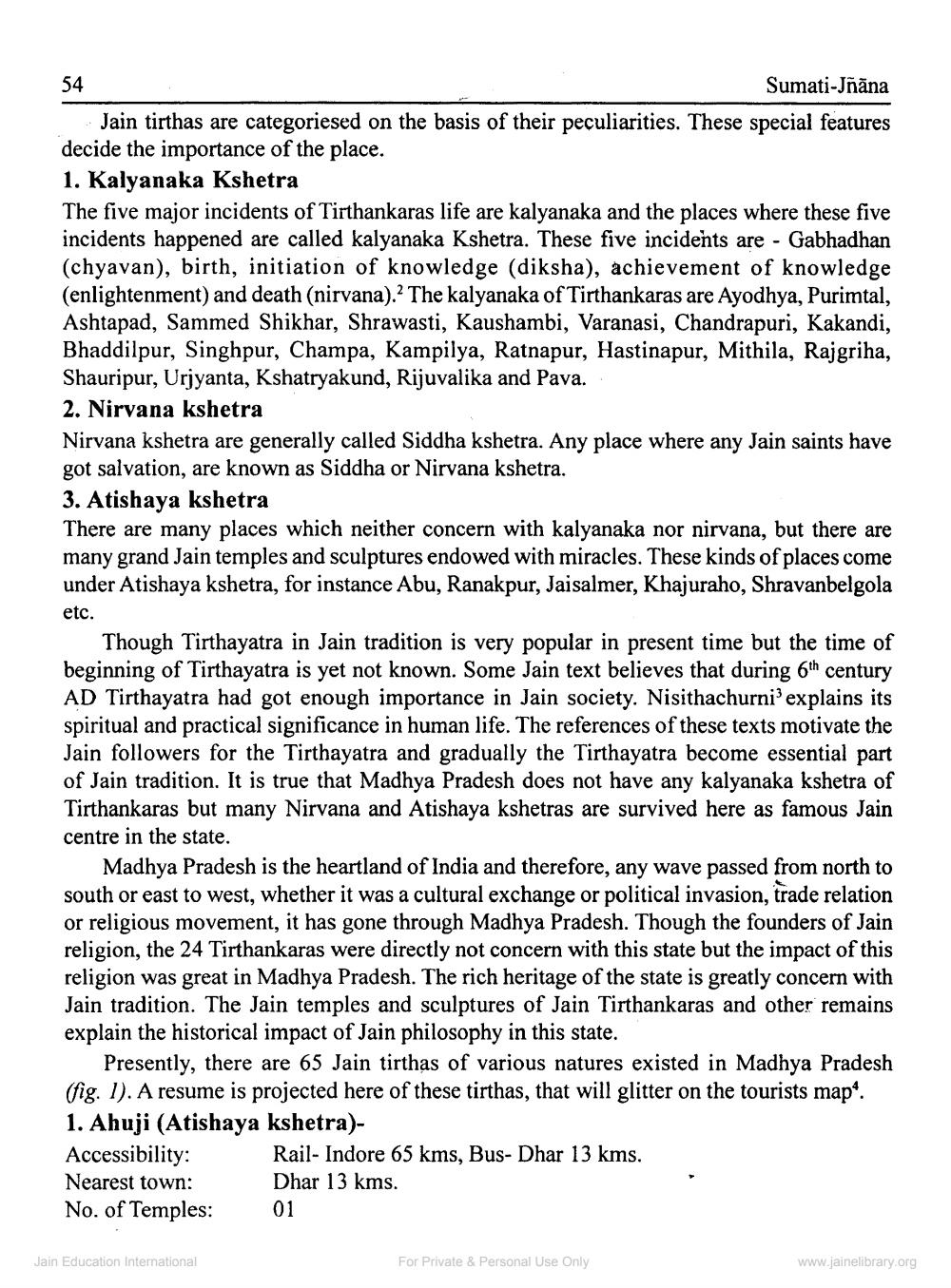________________
54
Sumati-Jñāna Jain tirthas are categoriesed on the basis of their peculiarities. These special features decide the importance of the place. 1. Kalyanaka Kshetra The five major incidents of Tirthankaras life are kalyanaka and the places where these five incidents happened are called kalyanaka Kshetra. These five incidents are - Gabhadhan (chyavan), birth, initiation of knowledge (diksha), achievement of knowledge (enlightenment) and death (nirvana). The kalyanaka of Tirthankaras are Ayodhya, Purimtal, Ashtapad, Sammed Shikhar, Shrawasti, Kaushambi, Varanasi, Chandrapuri, Kakandi, Bhaddilpur, Singhpur, Champa, Kampilya, Ratnapur, Hastinapur, Mithila, Rajgriha, Shauripur, Urjyanta, Kshatryakund, Rijuvalika and Pava. 2. Nirvana kshetra Nirvana kshetra are generally called Siddha kshetra. Any place where any Jain saints have got salvation, are known as Siddha or Nirvana kshetra. 3. Atishaya kshetra There are many places which neither concern with kalyanaka nor nirvana, but there are many grand Jain temples and sculptures endowed with miracles. These kinds of places come under Atishaya kshetra, for instance Abu, Ranakpur, Jaisalmer, Khajuraho, Shravanbelgola etc.
Though Tirthayatra in Jain tradition is very popular in present time but the time of beginning of Tirthayatra is yet not known. Some Jain text believes that during 6th century AD Tirthayatra had got enough importance in Jain society. Nisithachurni’ explains its spiritual and practical significance in human life. The references of these texts motivate the Jain followers for the Tirthayatra and gradually the Tirthayatra become essential part of Jain tradition. It is true that Madhya Pradesh does not have any kalyanaka kshetra of Tirthankaras but many Nirvana and Atishaya kshetras are survived here as famous Jain centre in the state.
Madhya Pradesh is the heartland of India and therefore, any wave passed from north to south or east to west, whether it was a cultural exchange or political invasion, trade relation or religious movement, it has gone through Madhya Pradesh. Though the founders of Jain religion, the 24 Tirthankaras were directly not concern with this state but the impact of this religion was great in Madhya Pradesh. The rich heritage of the state is greatly concern with Jain tradition. The Jain temples and sculptures of Jain Tirthankaras and other remains explain the historical impact of Jain philosophy in this state.
Presently, there are 65 Jain tirthas of various natures existed in Madhya Pradesh (fig. 1). A resume is projected here of these tirthas, that will glitter on the tourists map". 1. Ahuji (Atishaya kshetra)Accessibility: Rail- Indore 65 kms, Bus- Dhar 13 kms. Nearest town: Dhar 13 kms. No. of Temples: 01
Jain Education International
For Private & Personal Use Only
www.jainelibrary.org




